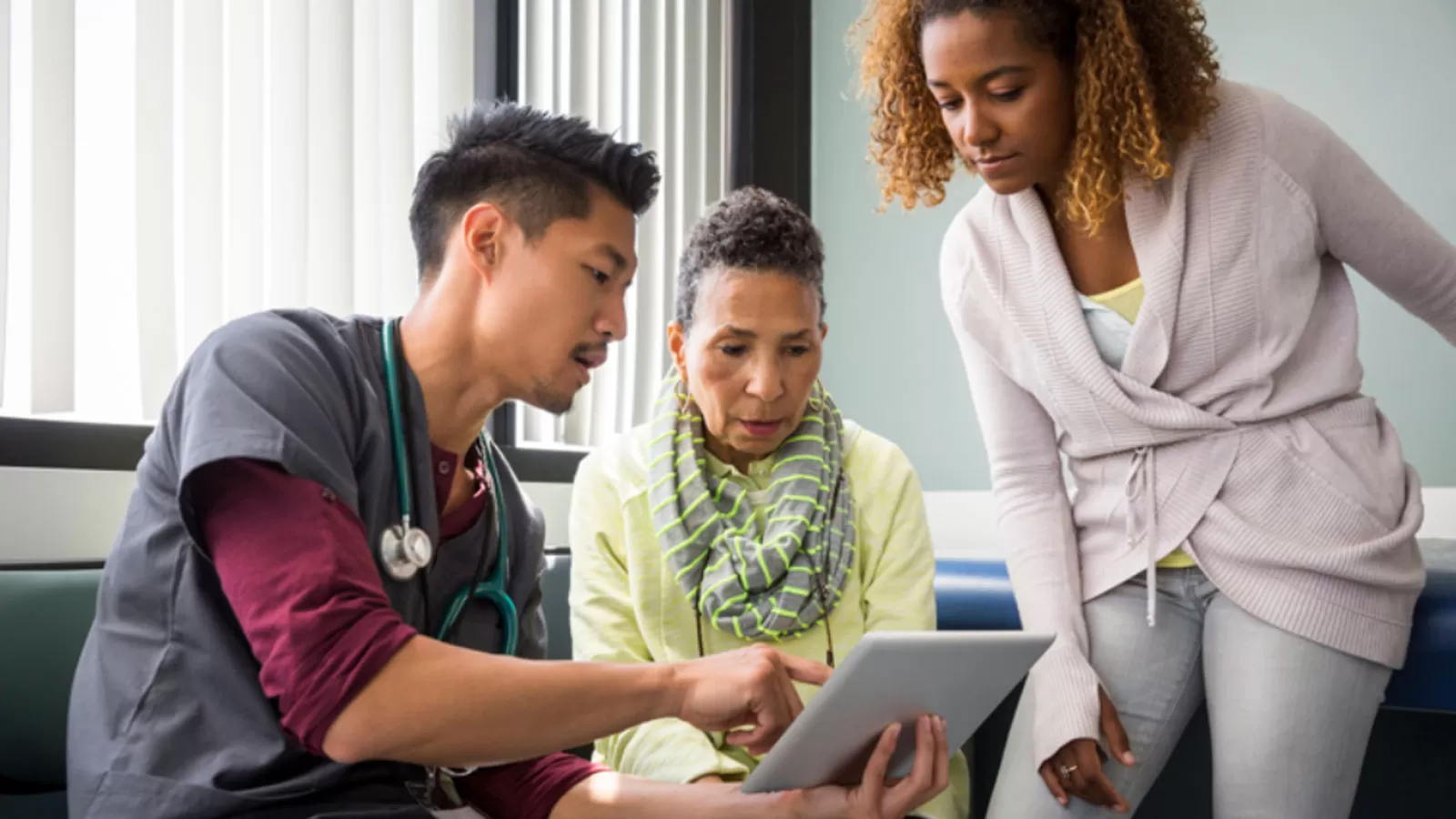What Are Biosimilars and How Do They Expand Treatment Options for Patients?

If you’ve experienced sticker shock in the pharmacy and considered not filling a prescription because of the cost, you’re not alone. Recent data shows that almost 13 million Americans delayed filling a prescription or didn’t fill it at all because of the cost.1
In an era of rising drug prices, getting lower-cost medicines in the hands of more people who need them is critical not only for the pharmaceutical industry, but also, and most importantly, for patients. Biosimilars make cutting-edge, lifesaving medicines more affordable, which can improve the lives of people around the world.1,2
What Are Biosimilars?
You may be familiar with a class of drugs called biologics. Biological medicines have created new opportunities to treat diseases, including cancers, autoimmune conditions and diabetes, to name a few. Stem-cell and gene therapies, insulin, and monoclonal antibodies are all examples of biologic therapeutics.2,3,4
As their name suggests, biologics are made with biological materials, including materials from humans, plants, animals, bacteria, and other microorganisms; they go through a rigorous, tightly controlled manufacturing process and tend to be patented.2,5 As their patents expire, the field opens to biosimilars.5
Biologics are highly complex molecules that are grown rather than synthesized and have an inherent level of micro-variability. Because of this variability in the structure of reference biologics, biosimilars cannot be exact copies. Instead, biosimilars mimic the active ingredient in the reference biologic.2
Just as it does for all medicines, the U.S. Food and Drug Administration (FDA) has specific standards for biosimilars that must be met. Specifically, the biosimilar must, as the name implies, be similar to the reference biologic in its structure and function. Biosimilars undergo extensive analysis to confirm they have the same characteristics as the reference biologics. The biosimilar must also have no clinically meaningful differences from the reference biologic in how it works, its safety, or its effectiveness.2
How Biosimilars Are Improving Access to Biologic Medicines
Despite their benefits, biologic treatments are often associated with a high price tag, which can present a challenge getting them to the patients who need them. Between research and development and clinical testing, studies have shown that the development of new biologics (including the cost of failures) can exceed $2 billion and can take 10 years or longer—and that's on top of developing and deploying the state-of-the-art technology necessary for manufacturing.5,6,7
Even with insurance, cost-sharing agreements for biologics can leave patients with a hefty bill or unable to afford the treatments at all. Drug companies, doctors, and governments want to expand access the benefits of these treatments and that’s where biosimilars come in.7
Drug companies can charge lower prices for biosimilars because much of the upfront development phase has been completed. While biosimilars go through testing to ensure they are as safe and effective as the original biologics, it doesn't cost billions of dollars to create this new class of drugs.6,7
According to the Association for Accessible Medicines, biosimilars have the potential to save the US healthcare system more than $133 billion by 2025.8
Reducing overall costs means more patients may be able to access these essential medicines and provide savings to the healthcare system, which can free up resources for other areas of patient care.7
Biosimilars vs. Generic Medications
Biosimilars are often compared to generic medications, but there are key differences.
The active ingredient within generic versions (of drugs that aren’t biologics) are exact copies of name brand medications, made with an easily repeatable manufacturing process.5,9
In contrast, due to the variability of biologics, biosimilars cannot be exact copies but they do have the same mechanism of action and the same expected benefits and risks as the original biologics.9,10
Similar to generics, biosimilars provide patients with lower-cost medicines, often making these treatments more accessible and improving quality of life for patients.7
Article References
- In the Years Before the COVID-19 Pandemic, 13 Million Adults Delayed or Did Not Get Prescription Drugs Because of Cost. Robert Wood Johnson Foundation. https://www.rwjf.org/en/library/research/2021/11/in-the-years-before-the-covid-19-pandemic-nearly-13-million-adults-delayed-or-did-not-get-needed-prescription-drugs-because-of-cost.html. Published December 1, 2021. Accessed May 19, 2022.
- Biosimilar and interchangeable products. U.S. Food and Drug Administration. https://www.fda.gov/drugs/biosimilars/biosimilar-and-interchangeable-products. Last updated October 23, 2017. Accessed October 27, 2021.
- Priyaregaa, Sivakumar and Ramanathan Natarajanb. An overview of biosimilars for cancer, diabetes mellitus, rheumatoid arthritis and other immune-mediated diseases approved between 2016 and 2021. Results in Chemistry. https://doi.org/10.1016/j.rechem.2022.100356. Published April 29, 2022. Accessed September 9, 2022.
- Targeted cancer therapies. National Cancer Institute. https://www.cancer.gov/about-cancer/treatment/types/targeted-therapies/targeted-therapies-fact-sheet. Last updated October 25, 2021. Accessed October 27, 2021.
- Eisenstein M. Bring on the biosimilars. Nature. 2019;569:S2-S3. https://www.nature.com/articles/d41586-019-01401-5. Published May 8, 2019. Accessed October 27, 2021.
- Let's see how biosimilars are developed. Pfizer. https://www.pfizerbiosimilars.com/biosimilars-development. Last updated August 2021. Accessed October 27, 2021.
- Let's see what biologics and biosimilars mean for healthcare value. Pfizer. https://www.pfizerbiosimilars.com/biosimilars-potential-value-2. Last updated August 2021. Accessed October 27, 2021.
- The U.S. Generic & Biosimilar Medicines Savings Report. Association for Accessible Medicines. https://accessiblemeds.org/sites/default/files/2021-10/AAM-2021-US-Generic-Biosimilar-Medicines-Savings-Report-web.pdf. Published October 2021. Accessed March 2022
- Generic drugs: Overview and basics. U.S. Food and Drug Administration. https://www.fda.gov/drugs/generic-drugs/overview-basics. Last updated September 13, 2017. Accessed October 27, 2021.
- Patient Materials. U.S. Food and Drug Administration. https://www.fda.gov/drugs/biosimilars/patient-materials#:~:text=En%20Español-,Biosimilars%20are%20safe%20and%20effective%20medications%20for%20treating%20many%20illnesses,%2C%20kidney%20conditions%2C%20and%20cancer. Last updated October 7, 2020. Accessed August 8, 2022.




